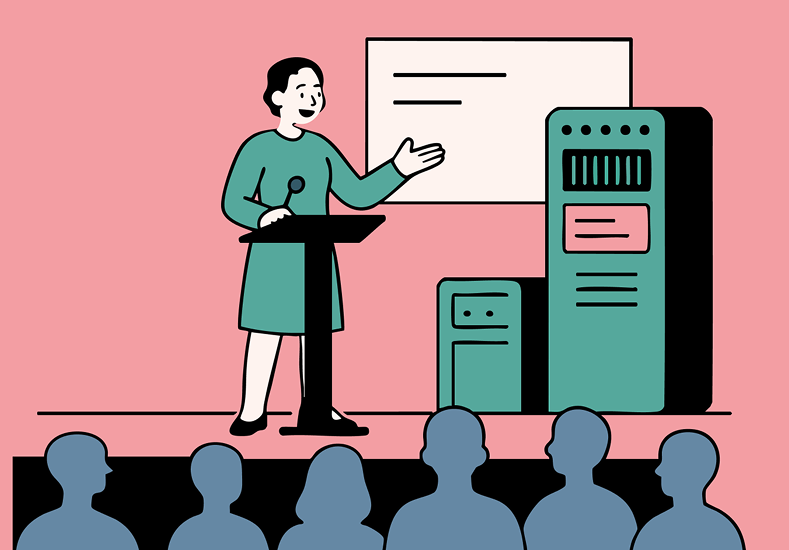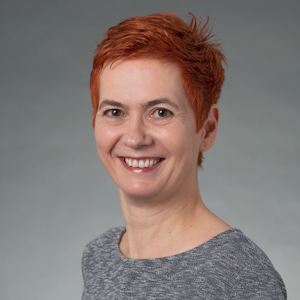There is a myth that has persisted for decades: high-performance computing (HPC) is only for men. Physicist and HPC pioneer Claudia Blaas-Schenner is one of the women disproving this tale. As a founding member of the Central European Chapter of the initiative Women in HPC (WHPC), she is a clear advocate for greater diversity. In this interview, Claudia talks about her own path in HPC and encourages young women to simply get started.
Not really – I was kind of lucky myself. But of course, I did feel the systemic underrepresentation of women, especially earlier in my career. I was one of only a few female students in physics, the only woman in the research group, the only woman at a conference, the only female speaker – and sometimes the only female keynote speaker. Even if I got used to it, it still felt a bit awkward at times.
Earlier in my career, I really wished for a female role model. Although the situation has improved over the years – over the decades – we’re still far from true gender balance. That’s why initiatives like WHPC are still very much needed.
Seeing the ASC (formerly known as VSC) grow into one of the leading HPC training centres in Europe makes me really proud – and I consider that a personal success.

It’s the result of years of hard work. I’ve faced many challenges: from lack of support within the team in the early days to the ongoing struggle to secure funding for continued growth. Over time, I’ve built strong leadership skills and earned recognition as an expert and key figure in the European HPC community. I hold several leadership roles in international conferences and initiatives, such as the MPI Forum and EuroMPI. I also serve in the steering committee for the ASHPC conferences, and I am head of the ASC training programme.
I’d say: Be bold, believe in your potential, stay curious, seek support, and don’t hesitate to step into the world of HPC – it needs your perspective and talents now more than ever. A gender-balanced team brings a wider range of perspectives and often solves problems more efficiently.
There are plenty of ways! Concrete options include:
“
My advice to young women interested in technology: don’t hesitate to step into the world of HPC – it needs your perspective and talents now more than ever. A gender-balanced team brings a wider range of perspectives and often solves problems more efficiently.
„
Claudia Blaas-Schenner is responsible for training, education, and skills development in HPC and related techniques at ASC – Austrian Scientific Computing at TU Wien. She leads all HPC training initiatives and serves as a lecturer and programme director.
Claudia began her HPC journey after studying technical physics at TU Wien. Her need for powerful computers to conduct physics research led her to start working with supercomputers in 1990. Over time, HPC became her second specialisation. In 2014, she left her research position to join the ASC team and has since focused entirely on advancing HPC education and training.

To become a member of the Central European Chapter of WHPC, apply here. Tick the box “Central European (incl. centres in the Czech Republic, Poland, Austria, Slovenia, Slovakia, Hungary)” to become a member of the Central European Chapter.
If you have any questions about the Central European Network of WHPC, feel free to contact the team at ce.whpc@gmail.com.
One of WHPC’s most valuable tools for supporting women’s careers is the free mentoring programme, which runs two to three times a year. Register here for one of the next available spots.
WHPC on LinkedIn (following on LinkedIn is not a membership)